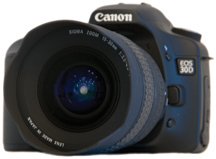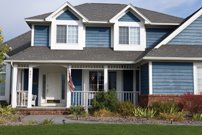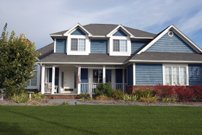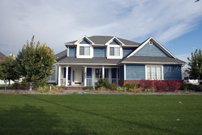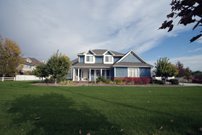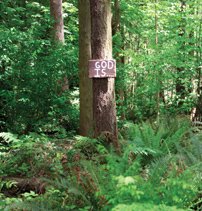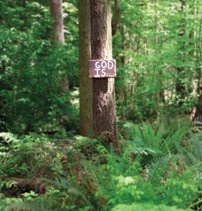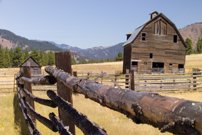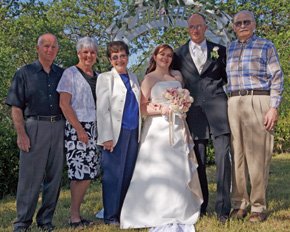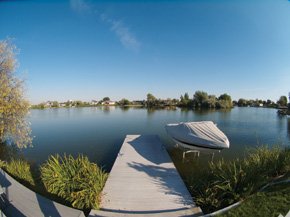Wide-Angle Lenses
| Wide-angle lenses (Figure 3.6) are a favorite of both landscape and indoor photographers because of their ability to capture large areas in a single image. Wide-angle is generally considered to be anything less than the 50mm focal length equivalent on 35mm film. Figure 3.6. Wide-angle lenses, such as this 15-30mm zoom lens, are favorites with landscape and indoor photographers because of their ability to capture large areas in a frame.
Wide-angle lenses in the 24-35mm focal length range are the most popular, letting you capture more in the frame without the distortion problems sometimes seen in wider lenses. True landscape fans will tell you that you can never get too wide, though, so 14-20mm is a popular choice with the outdoor crowd. To give you a practical example, the images shown in Figures 3.7 through 3.10 were all shot from exactly the same location with the same aperture. Figure 3.7 was shot with a 50mm focal length and represents what is considered the normal focal length. Figure 3.8 was captured at 35mm and still shows normal perspective, but with more of the house in the frame. In Figure 3.9, we've gone down to 24mm, and you can start to see the effects of wider angles where there is more of the foreground included in the scene, and the house is smaller. In the last example, Figure 3.10, you see the effect of photographing the scene with a 15mm lens. There is much more foreground included and the house has receded into the background. Remember, these were all photographed from exactly the same location. Figure 3.7. Here's the field of view with a 50mm, or standard-length lens. This most closely matches the human eye when looking at a scene.
Figure 3.8. At 35mm, there is more in the frame, but the perspective still looks close to normal with very little change in scale.
Figure 3.9. Moving to 24mm, there is much more area included in the image, with the main subject taking less prominence in the scene.
Figure 3.10. At 15mm, the ultra-wide-angle, includes all of the yard, making the house look further away than the other images.
Although you can use a wide-angle lens as a conventional lens that just takes in more of a scene, these lenses really shine when used to their full potential in landscape. The greater depth of field with shorter focal lengths allows you to have more of your scene in sharp focus, as you can see in Figures 3.11a and b. Both of these images were taken with the same aperture, but in 3.11a you see less of the scene in focus when shot at 105mm compared to 3.11b, which was captured at 35mm. I kept the scene the same by cropping the 35mm image to show the same field of view. Figure 3.11a. This image was captured at 105mm with a aperture of f/5.6; compare the areas in focus with the photo in Figure 3.11b.
Figure 3.11b. With a 35mm lens, the same aperture of f/5.6 gives a greater depth of field which is easy to compare against Figure 3.11a.
An effective way to use wide-angle lenses in your composition is to shoot low, with a foreground subject to draw the eye into the photo. As an example, compare Figure 3.12, shot at a normal standing height with no foreground object, to the image in Figure 3.13 which was taken at the same location but at a lower position relative to the ground to emphasize the foreground object and lead your eye into the scene. Figure 3.12. Shooting landscapes with a wide-angle can give you a photo where everything appears small and loses impact. This shot was taken standing up with nothing to really give a visual clue as to distances.
Figure 3.13. By shooting from a lower position and including foreground detail, the scene now has more visual interest and scale.
You'll also find wide-angle lenses useful when shooting indoors, capturing more of the room in your shot (Figure 3.14), and when shooting groups of people (Figure 3.15). Figure 3.14. Wide-angle lets you photograph more of an interior when shooting indoors.
Figure 3.15. Wide-angle lenses aren't just for landscapes and interiors. They are also useful when photographing groups of people.
Finally, there is the ultra-wide-angle lens known as a fisheye lens, which comes in two flavors: the familiar circular frame, and the full-frame rectangular fisheye shown in Figure 3.16. Both types of fisheye lenses have extreme distortion, but that's part of the appeal to this type of image, and with proper composition fisheye lenses can make for very interesting effects. Figure 3.16. A full-frame fisheye lens gives you a normal-looking photograph with no dark corners.
Because a fisheye often has a 180-degree field of view, you really need to keep your eyes open for things like feet and arms that end up in the image (Figure 3.17). Figure 3.17. Fisheye lenses capture a full 180-degree view of the world in front of you, usually with extreme distortion to straight lines. Watch for stray objects, like the arm on the left, when using one of these lenses!
|
EAN: 2147483647
Pages: 91
